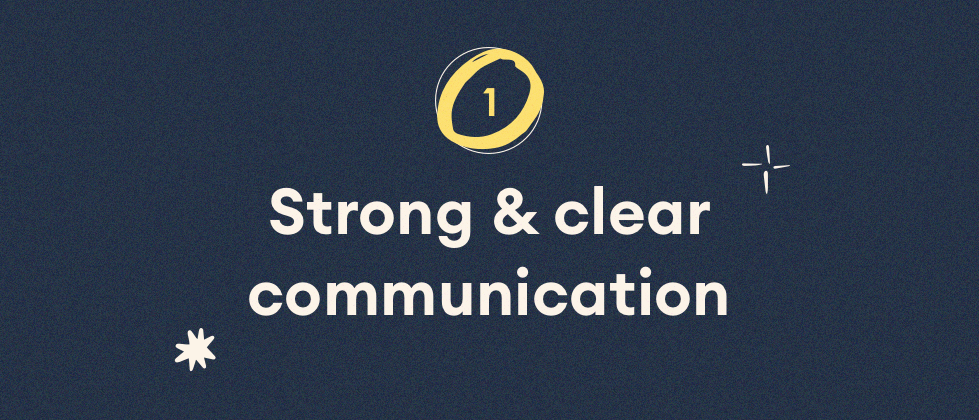Employee engagement is a critical component of any successful organisation. It’s been shown to increase productivity, morale and customer satisfaction. From company culture to career opportunities, employee engagement has many different drivers. However, one of the most important ways to increase your team’s engagement is the presence of engaging leadership. Let’s look at what it means to have engaging leadership and how it can improve the satisfaction and participation of your employees.
What is engaging leadership?
There are many different leadership styles, but the most engaging leaders tend to have one thing in common: they make their employees feel valued. There are many ways to recognise valuable work, such as offering praise and recognition for a job well done, investing in training and development opportunities, or simply taking the time to listen to concerns and ideas. When employees feel valued, they are more likely to be engaged in their work. They’ll be invested in the company, knowing that their efforts are worthwhile and matter.
An engaging leader also understands the importance of building relationships within the team. By creating a positive and supportive environment, team members are more likely to feel comfortable expressing their ideas and working together towards collective success. Ultimately, an engaging leader knows that a motivated team is a productive one. Employee productivity is excellent for business, as businesses reap the benefits of higher performance and profitability.
Why is engaging leadership important?
Employee engagement starts with leadership. After all, leaders are the ones who set the tone and culture for an organisation and they have a direct impact on how employees feel about their work. In fact, it was found that 75% of workers who quit their jobs do so because of their relationship with their manager or supervisor — not the work itself. This shows just how important it is for leaders to create a positive and engaged workplace, as being on good terms with the boss greatly impacts employee well-being and engagement.

When employees are engaged, they are more productive, creative and more likely to stay with their company. They also tend to be healthier and have less absenteeism. This can have a significant knock-on effect on a company, as engaged employees will positively impact customer satisfaction, which can lead to increased sales and profitability. In short, engaged employees produce better business results.
We’ll deliver our latest content straight to your inbox
What does engaging leadership look like?
While there are many different leadership styles, an engaging leadership style typically includes some common characteristics, such as being supportive, communicative and focused on the team rather than the individual. Here are a few leadership best practices that improve employee engagement:
Strong & clear communication
Leadership involves much more than taking charge and giving orders. In order to be an effective leader, it is essential to be a strong and clear communicator. Employees are 10 times more likely to be frustrated by leaders who under-communicate than those who over-communicate. This is because unclear communication leads to confusion and misunderstanding, which can quickly snowball into frustration and resentment.
The solution is to ask employees about their communication preferences and make a conscious effort to meet this. When in doubt, err on the side of too much communication rather than too little. By taking the time to establish clear and open lines of communication, leaders can create a more engaged and productive work environment.

Clear vision & goals
An engaging leader will have a clear vision for the team or organisation and be able to articulate this in a way that motivates and inspires employees. This can be done by setting challenging yet achievable goals and providing regular updates on progress towards these goals.
By having a clear vision and communicating this effectively, leaders can ensure that employees are always aware of what needs to be done and why it is important. This can help to create a sense of purpose and direction, guiding your team towards a collective goal. Plus, it gives employees a sense of ownership and responsibility for the company’s success.
Have reasonable expectations
One of the quickest ways to disengage employees is to have unreasonable expectations. This could be anything from expecting employees to work long hours without compensation or forcing them to take on tasks outside their job description. Not only is this unfair, but it will also lead to resentment and feeling undervalued.
Instead, try to have reasonable expectations and ensure that employees are fairly compensated for their work. This will help to create a more engaged and motivated workforce. While a challenge is good for engagement, it is important to make sure that the challenges are achievable and reasonable.
Lead from personal experiences
Leaders who share their personal experiences with their team are more likely to be seen as relatable and approachable. This can help to build trust and mutual respect, which are essential for engagement. When leaders share their personal experiences, it also shows that they are willing to be vulnerable and open, which can encourage employees to do the same. This type of open and honest communication can help foster a sense of connection and belonging.

Be a passionate leader
Passion is contagious, and it can be infectious when leaders are passionate about their work. Passionate leaders tend to be more energetic and enthusiastic, which can help to motivate and encourage employees, too. They also tend to be more committed and invest extra time and energy into their work, which is a great way to lead by example. If your team sees that you care and believe in the company’s goals, it’s a great inspiration.

Shows trust in employees’ abilities
Trust is the foundation of any good relationship, and when leaders trust their employees, it shows that they believe in their potential. This can help to build self-confidence and encourage employees to push themselves to achieve their goals. Leaders who micromanage and try to control every aspect of their employees’ work are more likely to create a feeling of insecurity and frustration. Instead, delegating tasks and giving employees the autonomy to do their jobs is important. Not only does this show trust in their abilities, but it also allows them to take ownership of their work and feel more engaged.

Open to ideas and feedback
It can be easy for leaders to become set in their ways and resistant to change. However, listening to employee feedback and being open to new ideas is important. This shows that you value employees’ opinions and want to create a work environment that is conducive to innovation. It also helps to create a collaborative environment where employees feel like they can contribute to the decision-making process, creating a sense of mutual respect and trust. You can use an employee-generated video platform like Seenit to collect employee feedback, ideas, and stories. This is a great way to open up the lines of communication and ensure that employees feel heard.

Acknowledges the contribution
Acknowledging employees doesn’t have to be a big production. A simple “thank you” can go a long way in making someone feel appreciated. Leaders who take the time to recognise their employees for their hard work are more likely to create a culture of appreciation and gratitude.
This can, in turn, help to increase employees’ feelings of being valued and appreciated for the work they do. For specific achievements, leaders can go above and beyond with a more public acknowledgement, such as announcing it at a team meeting or sending out a company- or team-wide email.

Promotes employee well-being
A happy and healthy employee is a productive and engaged employee. Engaging leadership acknowledges this and puts employees’ well-being at the forefront. This can include things like offering flexible working arrangements, promoting work-life balance and providing access to mental health support. It shows that you care about your employees as people — not just as workers — and that you are committed to creating a work environment where they can thrive.
All in all, leadership and employee engagement go hand in hand. Employees need to feel like they are valued, and respected and that their contributions are acknowledged.
Leaders play a key role in creating this type of environment; exhibiting these qualities can help increase employee engagement. To improve engagement in your organisation, start by looking at your own leadership style and considering how you can make small changes to create a more positive and supportive work environment.
A great way to start promoting a culture that fosters engagement is with an employee-generated video platform like Seenit. Use Seenit to collect employee feedback, ideas and stories in an easy and fun way. This can help create a more open and engaging culture and give you valuable insights into what your employees are thinking and feeling.







